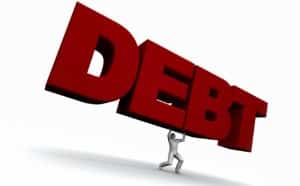
Credit cards. The ultimate double-edged sword of the economic system. They allow you instant gratification on the promise that you will pay later. They can, at times, save you in a true financial emergency, or emergency moment. Credit cards carry with them a mystical quality, as they don’t give you a visual of actually pulling the money out of your pocket, wallet, or purse. They are the plastic version of monopoly money in our collective minds. Therein lies the problem for you, and the glory for the credit card companies – the illusion & rationalization that you will be able to cover your monthly charges right up until the bill arrives in your mailbox, or inbox, and you can’t. The strategies for handling credit card debt vary almost as much as the type of credit cards you can obtain. OK, that may be a bit of an exaggeration, but I hope you see the point. You can take your pick of credit card reduction philosophies, and be successful, given your situation. Tackling credit card debt takes both a plan and discipline.
Assess your credit card debt situation. This is step one. Part of the problem that helps create credit card debt is denial, or just a lack of awareness. As the bills pile up, people just don’t know what to pay first, or how they can get out of the financial hole that has been created. Take the time to sit down with your credit card bills and list the amounts on paper. As difficult as this may be, it will give you a clear look at your credit card debt picture.
Devise a plan. Here’s where you choose your payment style. For me, I chose to transfer as much debt to one card as I could. I chose the card with the largest balance available, longest term of repayment at a zero interest rate, and the smallest fees for balance transfers (read the small print on transfer fees!). Then, I could pay off the remaining credit cards one at a time. Base your plan on what is the best for you. Take into account as much as possible to pay the least amount of fees and interest, while doing your best to keep your plan simple.
Execute your plan. Once I made the transfer, I set a payment budget/schedule for myself. I then started paying off the credit card debt one at a time, paying the smallest balance first. This helped me build confidence I couldn’t see if I paid off the largest balance first. After I paid off one card, I could then move on to the next. Some finance experts may criticize this plan. Here’s what I have to say to that: I don’t care – this is what worked for me.
Learn as you go. I paid off my credit card debt in a short amount of time, partially because my living situation at the time provided the right opportunity (low rent & expenses) for me to do so. But I learned valuable lessons in the process. The first is that I could address the challenge of credit card debt, and succeed. Second, and more importantly, I learned to prevent it from ever happening again. Since paying off my credit card debt over a decade ago, I’ve paid a grand total of 64 cents in interest; and I only paid that due the bill being lost in the mail (I got the late fee credited back to me). I’m still mad about it! I’ve had a “perfect record” with credit cards for a long time, since my rebirth!
Credit card debt is not easy. I ran up bills for a solid period of time before I decided to address the issue. What did it for me was realizing how much interest I was paying monthly – most of what I was sending in. Obviously, there are a myriad of extenuating circumstances that can create additional challenges – medical expenses, sudden job detours, personal emergencies. The methods described here may not be the blueprint that works for your situation. Assessing your situation, devising a plan, executing your plan, and learning as you go can provide you with confidence in paying your credit card debt, and take away some of the glory from those credit card companies.